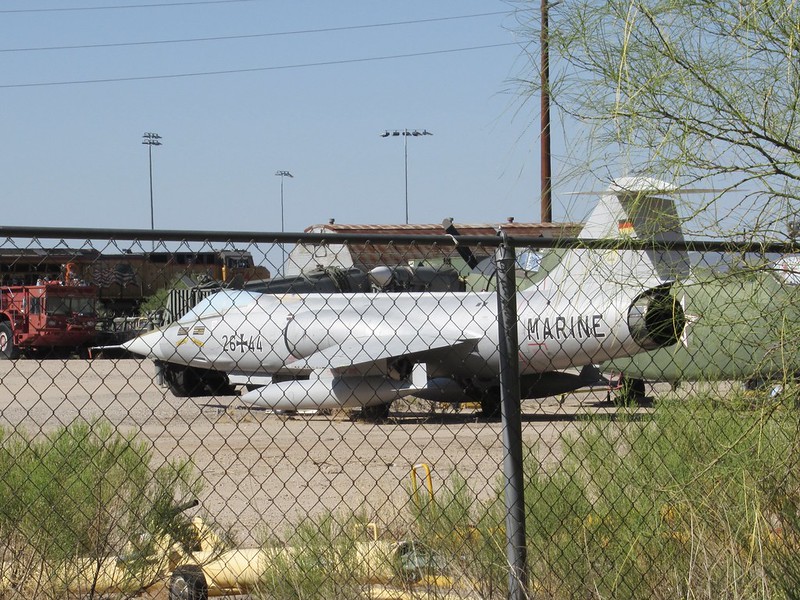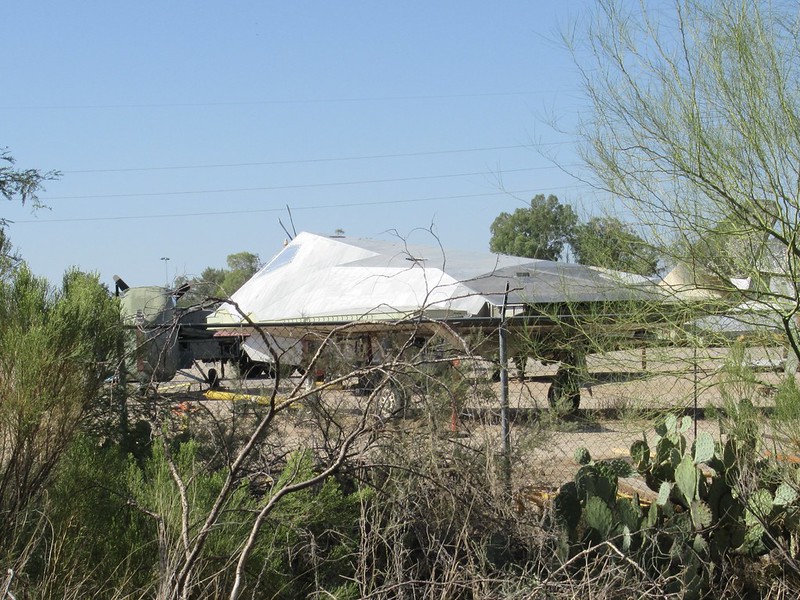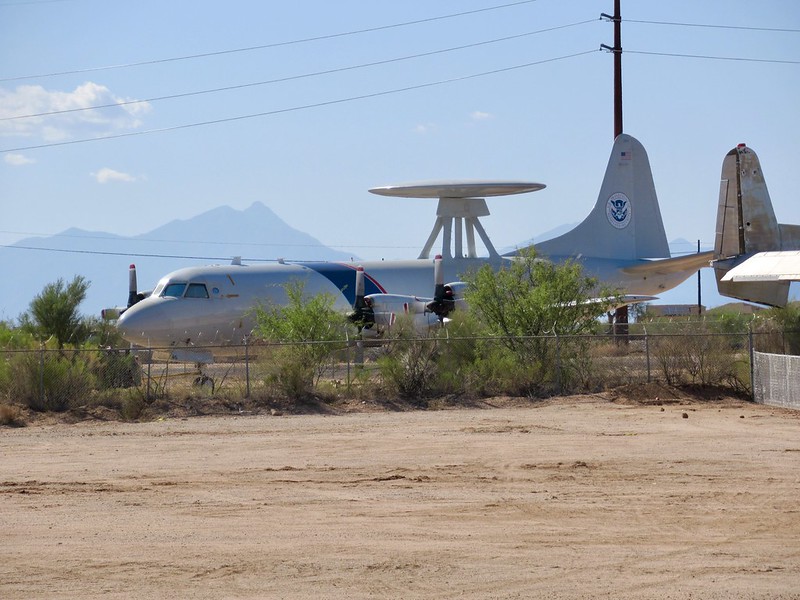
I dropped by the Pima Air & Space Museum yesterday. As you may know from prior posts and photoblogs, I was a PASM volunteer docent for almost ten years, right up until the week before the COVID pandemic shut the place down. When PASM eventually re-opened it operated without volunteers for a few months. Over the past year the museum has brought on a handful of docents (it's unclear to me whether they're volunteers or paid workers). So few, in fact, that visitors might spend an entire day at the museum without seeing a single docent, a stark contrast with what PASM offered visitors before COVID (and with other air museums I've visited).
A friend and former squadron mate, knowing I was planning a visit, asked me if PASM has a Lancaster or a Wellington (two WWII British bombers). No, I responded, but it has a cousin, an AVRO Shackleton. Taking photos of the Shackleton for my friend was the primary goal of my visit yesterday. Here's two of the many photos I took:
 AVRO Shackleton AEW.2
AVRO Shackleton AEW.2
It's the details that intrigue me most, like the oil capacity of the Shackleton's Rolls-Royce Griffon engines:
 No, not quarts … GALLONS!
No, not quarts … GALLONS!
I spent a good part of my visit peering through the fence separating the restoration area from the main museum grounds, spying out what's new.
 Marineflieger F-104G Starfighter
Marineflieger F-104G Starfighter
 USAF F-117 Nighthawk
USAF F-117 Nighthawk
 US Customs & Border Patrol P-3 Orion
US Customs & Border Patrol P-3 Orion
The restoration area's off-limits, but adventuresome visitors can find vantage points from which to gaze within, and there's almost always something interesting there. I can't say for certain whether the F-104 and the P-3 will stay or go to another museum, but I'm pretty sure the F-117 is PASM's and will be on display before too much longer.
There's a small restoration workshop/hangar on the main grounds, and when the doors are open visitors can look right inside. I was happy to see work progressing on PASM's Bf-109, a WWII German fighter, and an even more intriguing aircraft hiding in the background. That one doesn't appear on the museum's online inventory of aircraft, which makes me think it's destined for somewhere else, and that's a shame.
 Messerschmitt Bf-109
Messerschmitt Bf-109
 Messerschmitt Me-262
Messerschmitt Me-262
I always check on Balls Three, the sole surviving B-52A, a former Edwards AFB mothership with dozens of X-15 launches to its credit, pulled from display nearly ten years ago for repainting. It's been in restoration ever since, and I'm sorry to report there's been no visible progress on it since my last report in March. No idea when it might be finished and put back on display.
There's an additional outdoor display area behind the WWII hangars on the south side of the museum. I call it the Back 40. Visitors can see only a small part of it from the main display area, and many don't realize it's there. Currently the museum uses it for its collection of jumbo jets and retired firefighting aircraft (all of which are in horrible condition). In addition to being out of sight, hidden behind the WWII hangars, it's a long trek to get there and once you're there good luck finding any shade. For older and disabled visitors, it's effectively off-limits, even if they know it's there and want to explore it. If I could get the attention of someone in charge, I'd recommend providing a free shuttle service to make the area accessible ... and while I'm offering unsolicited advice, get some more docents!
 Former firefighting aircraft in the Back 40
Former firefighting aircraft in the Back 40
 Two of four jumbos on display in the Back 40
Two of four jumbos on display in the Back 40
As always, I set up a Flickr album for the photos I took yesterday. Click here to see it.


